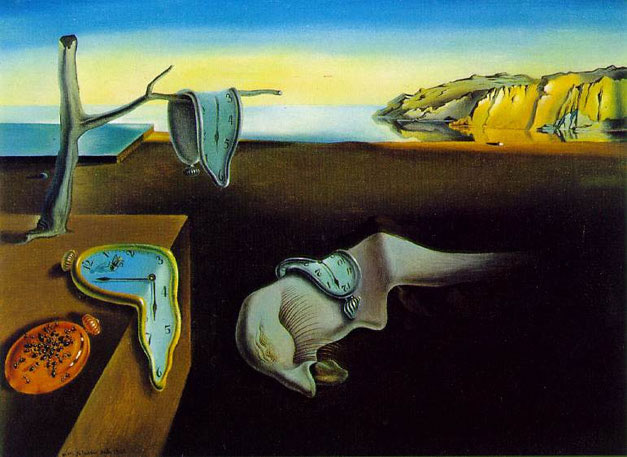The 20th Century
After using these resources, you should be able to answer these questions:
1. How did TECHNOLOGY affect the development of music?2. What are some of the different STYLES of 20th Century "classical" music?
3. What major national and world EVENTS propelled new thoughts and ideas about music?
___________________________________________
Main Themes:
- Breaking the established musical rules with melody, harmony, and form
- Bringing back old rules in a new way (this is the neo in neo-Classicism and neo-Romanticism, etc.)
- Demonstrating clear political, religious, and ideological beliefs
- Reflecting the events of the time
_______________________________________________
Main Styles
Unlike the periods we have learned about before, the 20th Century can not be defined simply by one set of characteristics. Just as technology developed faster and faster, so did art and music. In the 20th Century, we see art forms breaking into different styles. Some are below:
minimalism -- using one or few ideas -- as little information as possible
nationalism -- expressing identity with one's culture
impressionism -- forming vague suggestions of subjects rather than clear pictures
expressionism -- dissonant, powerful emotional messages
surrealism -- distorted reality-- dream-like
aleatory/chance -- music that is half-written, and half expected to be made up or decided by the performer
avant-garde -- pushing boundaries
neo-Classicism-- bringing back forms and ideas from the Classical period and adding new ideas to them
for more, visit this ThinkQuest page
Dates, historical events, etc.
Unlike the periods we have learned about before, the 20th Century can not be defined simply by one set of characteristics. Just as technology developed faster and faster, so did art and music. In the 20th Century, we see art forms breaking into different styles. Some are below:
minimalism -- using one or few ideas -- as little information as possible
nationalism -- expressing identity with one's culture
impressionism -- forming vague suggestions of subjects rather than clear pictures
expressionism -- dissonant, powerful emotional messages
surrealism -- distorted reality-- dream-like
aleatory/chance -- music that is half-written, and half expected to be made up or decided by the performer
avant-garde -- pushing boundaries
neo-Classicism-- bringing back forms and ideas from the Classical period and adding new ideas to them
for more, visit this ThinkQuest page
__________________________________________
About the 20th Century in musicDates, historical events, etc.
Essentials of Music
(ASK about some of these words!)
Music History 102
(This includes some composers, too!)
Capistrano School
ThinkQuest
(ASK about some of these words!)
Music History 102
(This includes some composers, too!)
Capistrano School
ThinkQuest
Composers
Sphinx Kids Composer's Gallery
(Click on STYLE, and then "20th Century")
Capistrano School
ThinkQuest Composers
Sphinx Kids Composer's Gallery
(Click on STYLE, and then "20th Century")
Capistrano School
ThinkQuest Composers
Mark Rothko "Orange and Tan"
Abstract Expressionism
Abstract Expressionism

M.C. Escher "Stairs"
Surrealism
Surrealism

Technology Timeline
| 1902 | the first radio signal across the Atlantic Ocean. |
| 1904 | First regular comic books. |
| 1906 | all electronic signals to be amplified improving all electronic communications i.e. telephones and radios. |
| 1910 | Thomas Edison demonstrated the first talking motion picture. |
| 1914 | First cross continental telephone call made. |
| 1916 | First radios with tuners - different stations. |
| 1923 | The television or invented - first television camera. |
| 1925 | first experimental television signal. |
| 1926 | Warner Brothers Studios invented a way to record sound separately from the film on large disks and synchronized the sound and motion picture tracks upon playback - an improvement on Thomas Edison's work. |
| 1927 | First television broadcasts in England. Warner Brothers releases "The Jazz Singer" the first successful talking motion picture. |
| 1930 | "Golden Age" of radio. First television broadcasts in the United States. |
| 1934 | first tape recorder for broadcasting - first magnetic recording. |
| 1938 | Television broadcasts able to be taped and edited - rather than only live. |
| 1939 | Scheduled television broadcasts begin. |
| 1944 | Computers put into public service - government owned - the age of Information Science begins. |
| 1948 | Long playing record invented Transistor invented - enabling the miniaturization of electronic devices. |
| 1949 | Network television starts in U.S. |
| 1951 | Computers are first sold commercially. |
| 1958 | photocopier invented |
| 1966 | the first successful fax machine. |
| 1969 | ARPANET - the first Internet started. |
| 1971 | floppy disc invented. The microprocessor invented - considered a computer on a chip. |
| 1972 | HBO invents pay-TV service for cable. |
| 1976 | Apple I home computer invented. First nationwide programming - via satellite |
| 1979 | First cellular phone communication network started in Japan.. |
| 1980 | Sony Walkman invented. |
| 1981 | IBM PC first sold. First laptop computers sold to public. Computer mouse becomes regular part of computer. |
| 1983 | First cellular phone network started in the United States. |
| 1984 | Apple Macintosh released. IBM PC AT released. |
| 1985 | Cellular telephones in cars become wide-spread. CD-ROMs in computers. |
| 1994 | American government releases control of internet and WWW is born - making communication at lightspeed. |
Videos
Claude Debussy's "The Sunken Cathedral" -- 1910 -- Impressionism
You can actually begin to see a cathedral surrounded by water!
Stravinsky's Rite of Spring "Introduction, Dance of the Young Girls" -- 1913
Fast-forward to about 2:30
Amy Beach's Suite for Two Pianos -- 1924-- late Romantic
Aaron Copland's Appalachian Spring -- 1944 -- Americana/nationalism
Steve Reich's "Music for 18 Musicians" -- 1976 -- minimalism


No comments:
Post a Comment